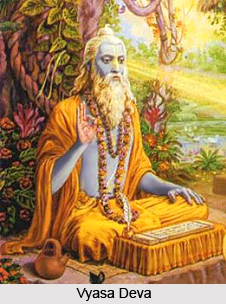 Vyasasthali Basthali is a holy place which is located on the Kaithal- Karnal Road in the northern Indian state of Haryana. Also referred to as `Devaipayana`, this sacred place is connected to various Indian saints, seers and Gods like Lord Vishnu, Lord Brahma, Lord Mehesa and Kurukshetra, the legendary battleground which finds a mention in the Hindu epic Mahabharata. Vamana Purana and Mahabharata claim that Vyasasthali Basthali is the region of intersection of Drisadvati River and Kaushiki River, near Kuruskshetra, which justifies its name being `Dwaipayana`. Since the confluence of these rivers appear black, the region was termed as `Krishna Dwaipayana`. The son of Parasara was known as `Krishnadwaipanayana Vedriyasa`, or Vyasa who was the author of Mahabharata, the 18 Puranas as well as the Bhagavata. To honour the great Indian saint Vyasa, this region was called `Vyasasthali`. It is said that a devotee must offer 16 palmfuls of `Tila`, in the `Kimdatta Kupa`.
Vyasasthali Basthali is a holy place which is located on the Kaithal- Karnal Road in the northern Indian state of Haryana. Also referred to as `Devaipayana`, this sacred place is connected to various Indian saints, seers and Gods like Lord Vishnu, Lord Brahma, Lord Mehesa and Kurukshetra, the legendary battleground which finds a mention in the Hindu epic Mahabharata. Vamana Purana and Mahabharata claim that Vyasasthali Basthali is the region of intersection of Drisadvati River and Kaushiki River, near Kuruskshetra, which justifies its name being `Dwaipayana`. Since the confluence of these rivers appear black, the region was termed as `Krishna Dwaipayana`. The son of Parasara was known as `Krishnadwaipanayana Vedriyasa`, or Vyasa who was the author of Mahabharata, the 18 Puranas as well as the Bhagavata. To honour the great Indian saint Vyasa, this region was called `Vyasasthali`. It is said that a devotee must offer 16 palmfuls of `Tila`, in the `Kimdatta Kupa`.
It is believed that if a devotee offers Tila, he obtains freedom from three loans which include `Deva Rina`, `Guru Rina` and `Pitri Rina`. If one takes a bath in the `Veditirtha`, he is awarded the outcome of the donation of a thousand cows. The story of Vyasadeva was narrated by Devi Bhagavata. She had asserted that following the conclusion of his studies, Shukadeva married and started following the custom of `Grihastha Ashrama`. Under this order, he approached the Kailasha Mountains and became engaged in meditation after leaving hid domestic life behind, since he was mentally perturbed. One day Vyasa broke the summit of Kailasha Mountain, empowered with his newfound meditation powers. Thereafter, he started shining like the sun. The Gods were in awe of this sage and started showering praises upon him.
However, he was heartbroken at the separation of his son. He then began to roam one place to the other and finally reached Kailasha. There he began to call out the name of his son desperately. Lord Shiva then offered him His consolation and told him to return to his ashrama, which he did. From that time onwards, this region was known as `Vyasasthali`.



















